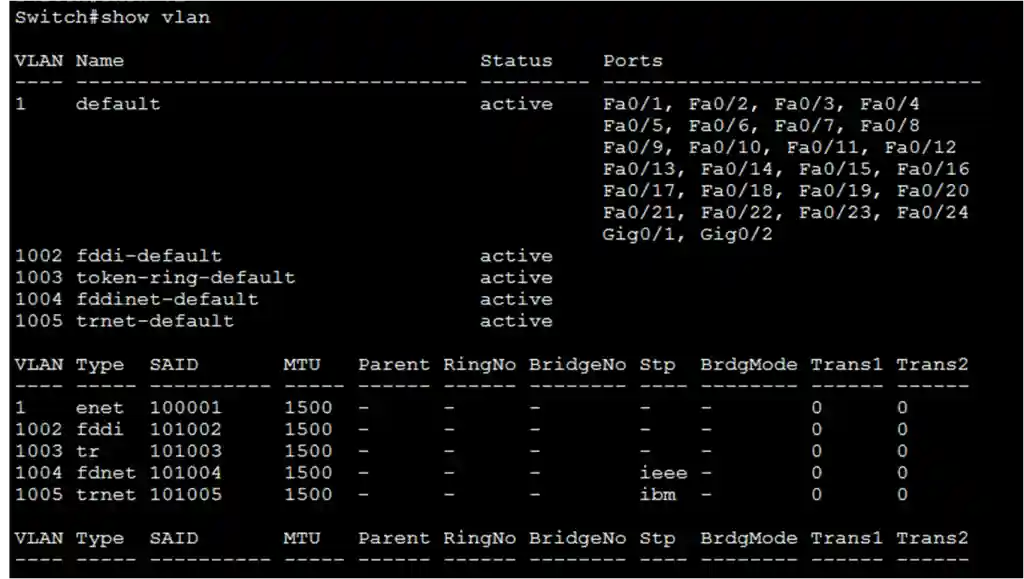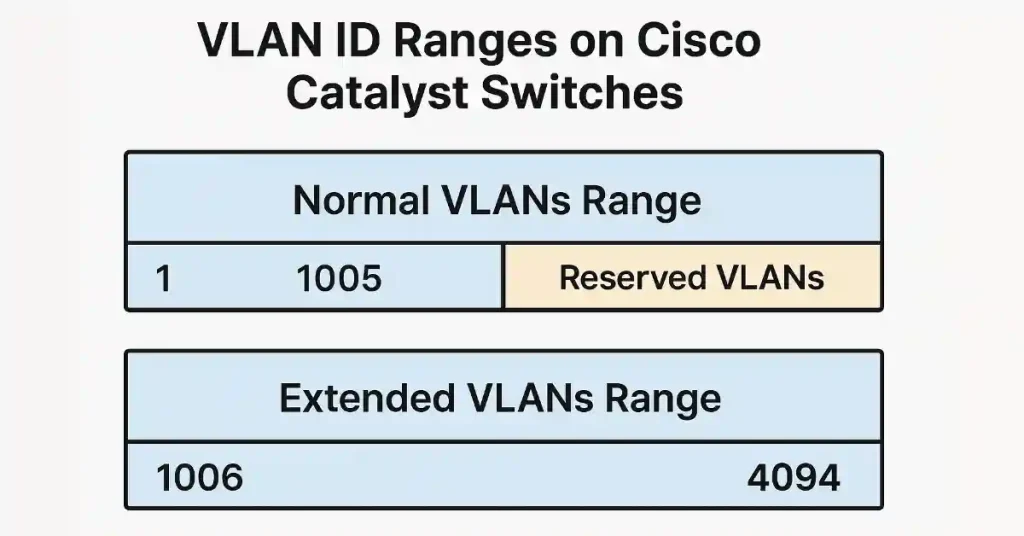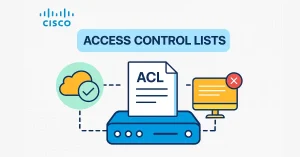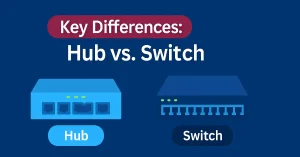Cisco Catalyst switches support a VLAN ID Range from 1 to 4094, divided into normal (1-1005) and extended (1006-4094) ranges. The normal range suits small to enterprise networks, with VLANs 1002-1005 reserved for Token Ring and FDDI, and cannot be removed. Extended ranges, stored in the running-config, support service providers but offer fewer features and no VTP support.

Normal VLANs Range
The usual range of VLAN IDs is between 1 and 1005. IDs 1002 through 1005 are reserved for Token Ring and FDDI VLANs. The automatically created VLANs (1, 1002, 1003, 1004, 1005) cannot be removed. VLAN database file (vlan.dat) stores VLAN configurations. The vlan.dat file is in the switch’s flash memory. The VTP (VLAN Trunking Protocol) helps manage VLAN configurations between switches. However, the VTP can only learn and store normal-range VLANs.
Extended VLAN ID Range
The extended VLAN range (1006-4094) supports service providers expanding to more customers. Configurations are stored in the running-config, not vlan.dat, and lack VTP synchronization due to its design for normal-range VLANs. Extended VLANs support basic functionality but exclude advanced features like VTP pruning.
Configuring VLAN ID Ranges on Cisco Switches
This section provides Cisco IOS commands to configure normal and extended VLANs on a Catalyst switch.
1. Configuring a Normal-Range VLAN
Switch> enable
Switch# configure terminal
Switch(config)# vlan 100
Switch(config-vlan)# name SALES
Switch(config-vlan)# exit2. Configuring an Extended-Range VLAN
Switch(config)# vlan 2000
Switch(config-vlan)# name GUEST
Switch(config-vlan)# exit3. Verifying VLAN Configuration
Switch# show vlan brief
Switch# show running-config | include vlanNote: Extended VLANs require manual configuration and are stored in the running-config, not vlan.dat.
Troubleshooting VLAN ID Range Issues
Resolve common VLAN range problems with these steps.
1. Missing VLAN in vlan.dat
Symptoms: Normal VLAN is not active.
Solution: Recreate the VLAN and save the config:
Switch# vlan 100
Switch# copy running-config startup-config
2. Extended VLAN Not Persisting
Symptoms: Extended VLAN is lost after reboot.
Solution: Ensure it’s in running-config:
Switch# show running-config | include vlan
3. VTP Sync Failure
Symptoms: VLANs not propagating.
Solution: Verify VTP mode and domain:
Switch# show vtp status
Conclusion
Understanding VLAN ID ranges is essential for effectively managing and optimizing network infrastructure. Cisco Catalyst switches offer a flexible range of VLAN support, catering to the diverse needs of organizations. Whether utilizing the Normal VLAN range for smaller networks or leveraging the Extended-Range VLANs for larger enterprises, proper VLAN configuration enhances network performance, security, and overall efficiency. As technology evolves, staying informed about VLAN capabilities ensures that networks remain adaptable to the dynamic requirements of modern businesses.





